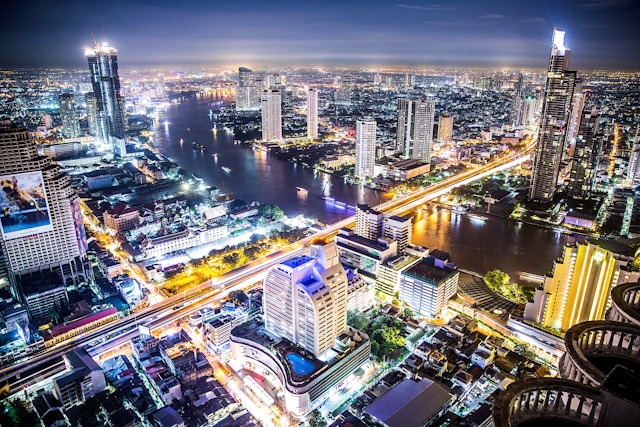Morocco, with its mesmerizing medinas, aromatic spice markets, and golden Sahara dunes, is a dream destination for many travelers. But depending on where you’re flying from, especially from North America, Asia, or Australia, getting there usually involves a layover — or two. Whether you’re planning a short stop or a long transit, knowing about common layovers to Morocco can make your journey smoother, faster, and even more enjoyable. Here are 9 quick facts you should know before your next flight.
1. Europe Is the Most Common Layover Region for Morocco-Bound Flights
If you’re flying to Morocco from outside of Europe, there’s a high chance your layover will happen somewhere in Europe. Major European hubs such as Paris, Madrid, Lisbon, Frankfurt, Amsterdam, and London often serve as gateways to Morocco. These cities are well connected to Moroccan destinations such as Casablanca, Marrakech, and Fes, offering both direct and budget-friendly flights.
For instance, Royal Air Maroc, Morocco’s national carrier, partners with European airlines like Iberia, Lufthansa, and Air France, allowing seamless connections through these major cities.
2. Madrid and Paris Are Top Layover Cities
Among European cities, Madrid (MAD) and Paris (CDG or ORY) stand out as the most common layover hubs to Morocco. Madrid’s Barajas Airport is geographically and strategically positioned to serve as a connection point to North Africa. Iberia and Air Europa offer daily connections to multiple Moroccan cities from Madrid.
Paris Charles de Gaulle and Orly airports are also busy transit points with numerous daily flights to Morocco operated by Air France, Transavia, and Royal Air Maroc. These cities not only offer efficient transit but also opportunities for long layover sightseeing.
3. Layovers Can Range from 2 Hours to 24 Hours or More
Depending on your route, layovers can be short (under 3 hours) or extend into overnight transits. Some travelers prefer longer layovers to explore layover cities like Lisbon or Rome. Others want the quickest possible transit time.
To decide what works for you, check if your layover airport has amenities like sleep pods, airport hotels, or city tours. Many airports in Europe offer free short-term visa-free entry to transit passengers for brief sightseeing — a great way to add another country to your itinerary.
4. Budget Airlines Also Play a Role
If you’re trying to save money, your layover might involve flying a budget airline from a European hub. Airlines like Ryanair, EasyJet, Vueling, and Transavia offer low-cost flights from cities like Barcelona, Brussels, and Milan to Moroccan airports.
However, keep in mind that budget airlines often fly from secondary airports (like Paris Beauvais instead of Charles de Gaulle), which may require additional transportation. Also, checked baggage is usually not included in basic fares, so pack light or budget accordingly.
5. Casablanca Is the Main International Gateway in Morocco
Most international flights to Morocco arrive in Casablanca’s Mohammed V International Airport (CMN). It is the largest and busiest airport in the country and serves as the main hub for Royal Air Maroc.
If you’re connecting domestically within Morocco (to Marrakech, Agadir, Tangier, etc.), Casablanca is likely your first stop. Many travelers book multi-leg journeys where Casablanca serves as the entry point from abroad and the hub for domestic travel within Morocco.
6. U.S. and Canadian Flights Often Connect in Europe
Direct flights from North America to Morocco are limited, though they are increasing. Royal Air Maroc offers direct flights from cities like New York (JFK), Washington D.C. (IAD), and Montreal (YUL) to Casablanca.
Still, many travelers from the U.S. and Canada end up flying through European hubs like Lisbon, Madrid, or Frankfurt due to better prices or routing options. Airlines like Air Canada, Lufthansa, and TAP Air Portugal commonly serve these connections.
7. Doha and Istanbul Are Key Layover Points for Asian and Middle Eastern Routes
If you’re flying to Morocco from Asia, Australia, or the Middle East, your layover may happen in Doha (DOH) or Istanbul (IST). These two global hubs offer excellent connectivity to North Africa.
Qatar Airways connects passengers through Doha with flights to Casablanca and Marrakech.
Turkish Airlines operates daily flights from Istanbul to several Moroccan cities.
These layovers are often long-haul and offer the opportunity to enjoy world-class airport services or even a brief visit to the connecting city.
8. Visas Might Be Required for Long Layovers
Before booking a long layover, be sure to check visa requirements for transit in your layover country. While many countries allow short layovers without a visa, some require a transit visa if you plan to leave the airport.
For example:
U.K. layovers may require a Transit Visa for some nationalities.
Schengen countries (like France, Germany, or Spain) might require a Schengen transit visa depending on your passport.
Always verify the entry rules with the airline or embassy if your layover is more than a few hours or involves airport changes.
9. Pack Essentials in Your Carry-On for Unexpected Delays
Given the possibility of long or overnight layovers, it’s smart to pack essentials like toiletries, snacks, travel documents, and a change of clothes in your carry-on. Layover delays, especially in winter or due to air traffic congestion, are not uncommon.
Also, download offline maps and boarding passes in advance, especially if changing terminals or airports. Investing in a universal power adapter and portable charger can make a big difference when outlets are limited or incompatible.
Bonus Tip: Use Layovers to Your Advantage
While layovers are often seen as an inconvenience, they can be a travel bonus if you plan well. Some cities offer free layover tours (like Istanbul and Doha), or easy train access into the city center. You can even plan a multi-day stopover to break up long travel and explore another destination on your way to Morocco.
With some flexibility, a layover becomes an opportunity to see more of the world for the same airfare.
Conclusion: Know Your Layover to Travel Smarter
So, what should you take away from these 9 quick facts about common layovers to Morocco? First, know that Europe will likely be your stepping stone, especially through cities like Madrid, Paris, and Lisbon. Secondly, budget-conscious travelers can benefit from low-cost airlines but must watch out for baggage fees and airport transfers. And finally, whether you’re flying from North America, Asia, or the Middle East, understanding your layover options can help you maximize comfort, minimize stress, and even add an extra adventure to your journey.
Morocco is worth every minute of travel. Make the layover part of the journey, not just the wait.
FAQs
1. What is the most common layover city when flying to Morocco?
Madrid and Paris are the most common layover cities, especially for travelers coming from North America or Asia. These cities offer frequent, well-timed connections to Moroccan destinations.
2. Are layovers to Morocco usually long?
It depends on your departure point. Flights from the U.S. or Asia often have longer layovers in Europe or the Middle East, ranging from 2 to 24 hours. You can often choose your preferred layover duration when booking.
3. Can I leave the airport during a layover to Morocco?
Yes, in many cases — but it depends on the visa requirements of the layover country and the length of your stop. For example, layovers in Paris or Madrid may allow you to leave the airport for short sightseeing if you’re eligible for visa-free entry.
4. Do budget airlines offer layovers to Morocco?
Yes, budget airlines like Ryanair, EasyJet, and Vueling offer low-cost flights to Morocco from various European cities. These are often not true “layovers” but rather separate tickets that require rechecking luggage and going through immigration.
5. Is it better to book a long layover for Morocco or a short one?
That depends on your travel preferences. Short layovers save time but can be risky if there are delays. Long layovers let you explore another city and rest between flights, but may require extra planning for visas or hotels.











